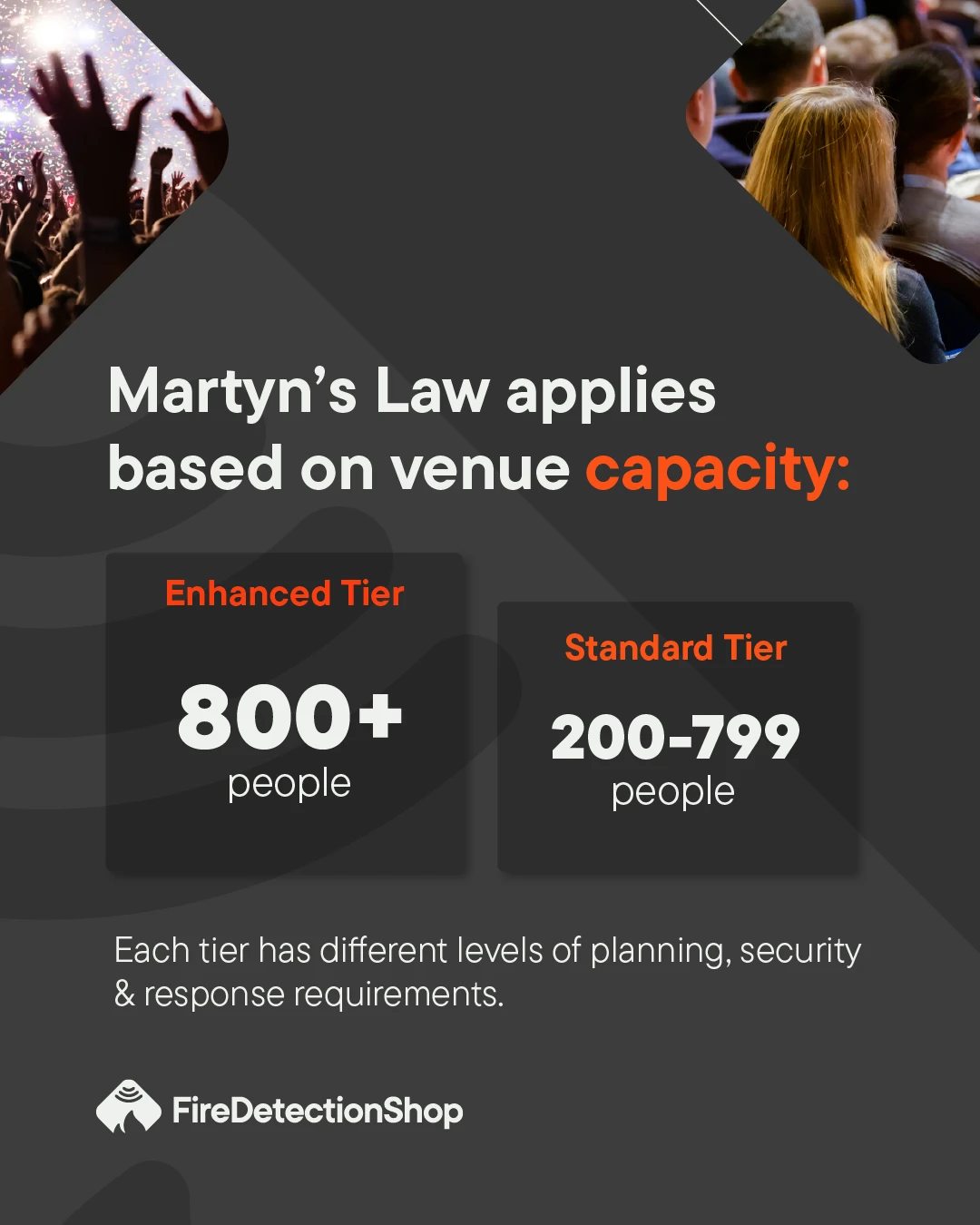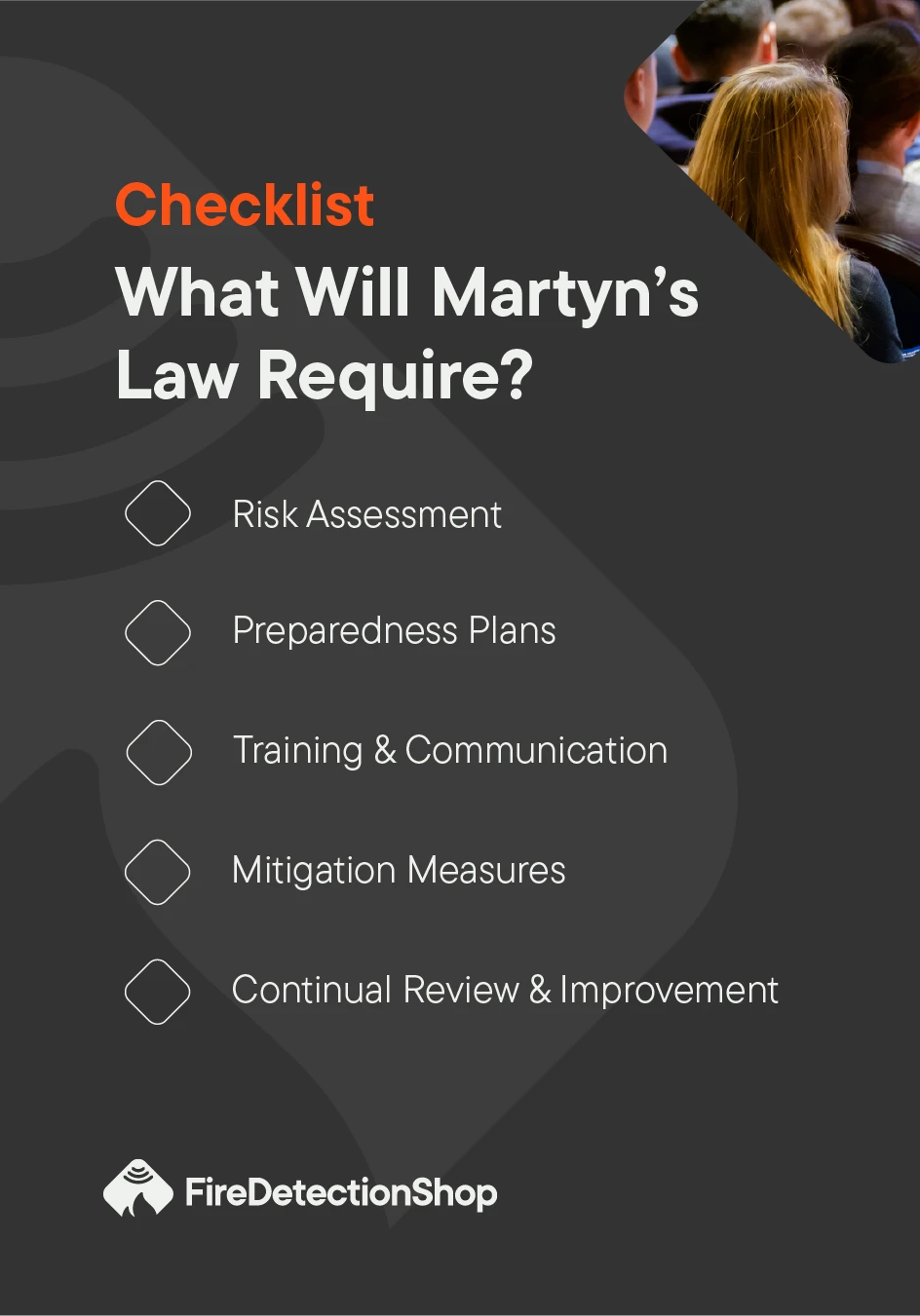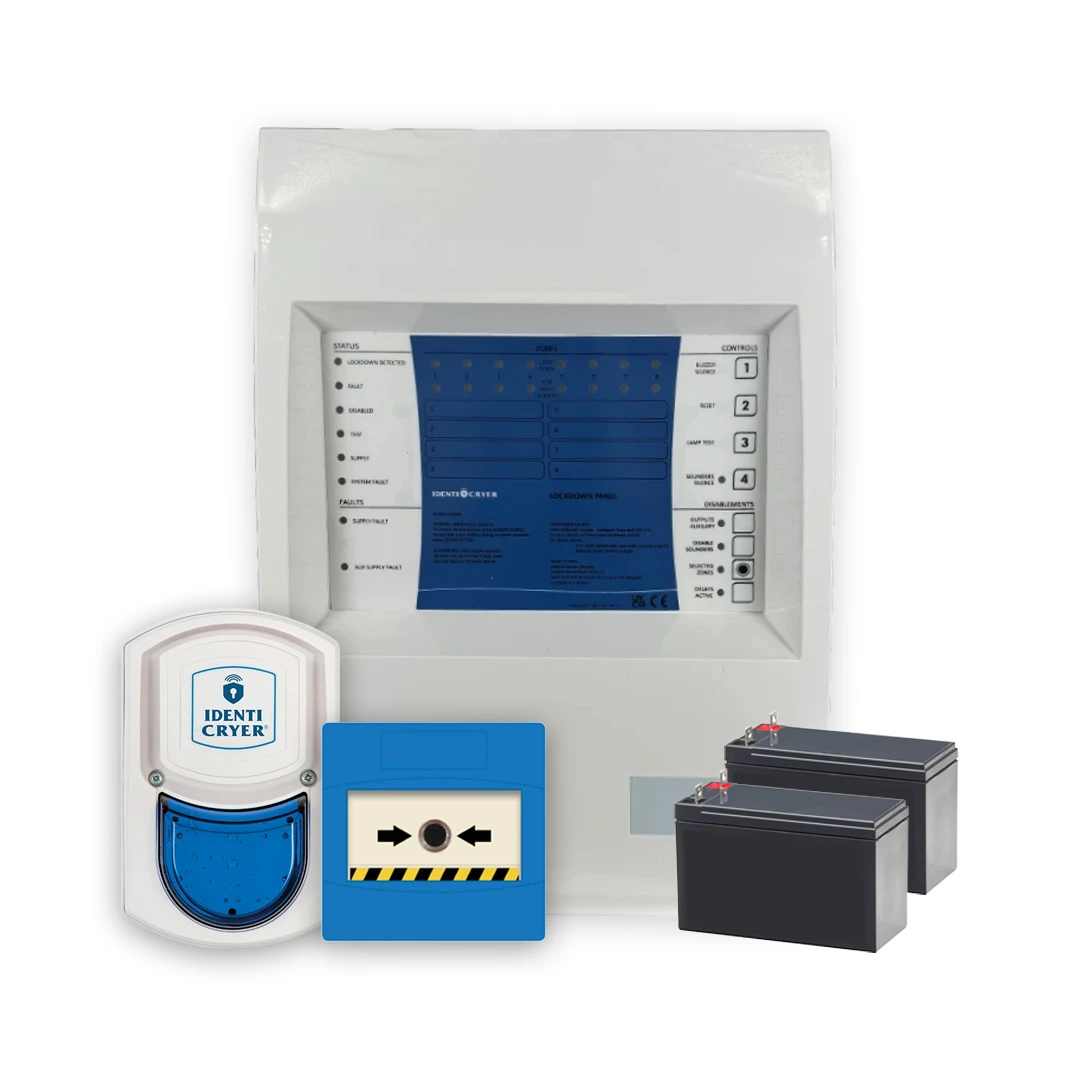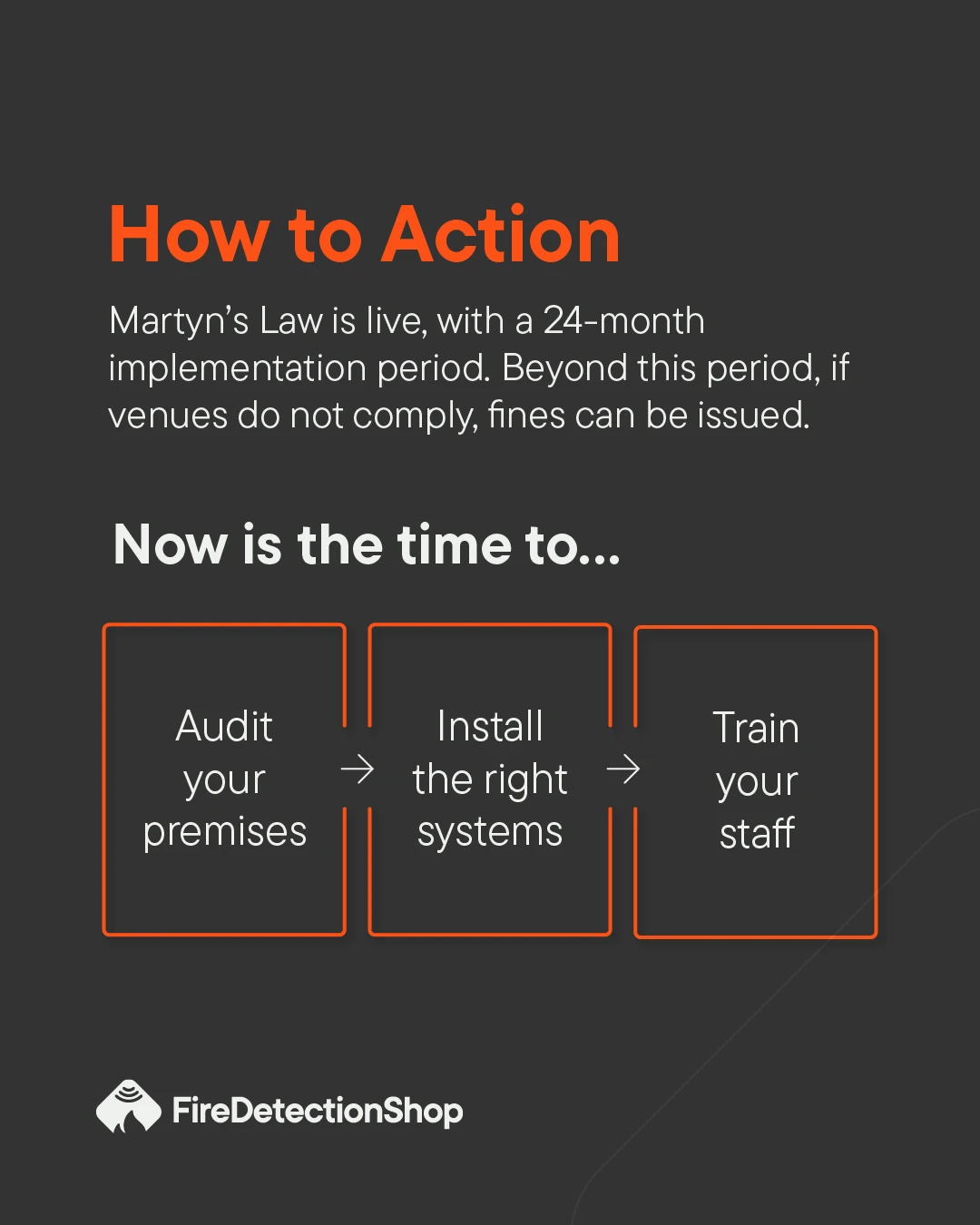
Need assistance?
Need Assistance? Call Us 0330 058 0630
29/07/2025 • by Alice P

In recent years, national conversations around public safety have gained new urgency, particularly following devastating events where emergency preparedness was lacking.
One of the most significant legislative responses to this is Martyn’s Law, a UK law set to reshape how venues manage security risks and respond to threats.
But what exactly is Martyn’s Law, and what does it mean for you if you’re responsible for a school, community centre, place of worship, or any public venue?
Martyn’s Law, formally known as the Protect Duty, is named in memory of Martyn Hett, one of the 22 victims of the Manchester Arena attack in 2017.
His mother, Figen Murray, has since campaigned for stronger laws to ensure that venues take proportionate steps to prepare for and respond to terrorism-related threats.
Her campaign has driven widespread public and political support, resulting in the drafting of legislation that will place new requirements on many public spaces and operators.

Martyn’s Law will apply to a wide range of venues, including schools, healthcare settings, places of worship, entertainment venues, retail and sports stadiums, and is expected to introduce the following five key requirements:
Risk Assessment
Venues will be required to assess the risk of a terrorist attack as part of their overall safety and emergency planning.
Preparedness Plans
Duty holders must create or update their emergency procedures, including what to do in the event of a lockdown or threat scenario.
Training and Communication
Staff must be trained on how to respond effectively, communicate clearly and use any safety systems in place.
Mitigation Measures
Proportionate physical and operational measures must be in place, including lockdown systems, barriers, alarms, or controlled access points.
Continual Review and Improvement
Procedures must be tested and reviewed regularly to ensure they remain effective and appropriate.

Many schools, nurseries, churches, village halls and social clubs have historically lacked formal lockdown or threat alert systems. With Martyn’s Law, that’s changing.
If your site welcomes members of the public or operates as a place of gathering, you may be required to:
Implement a lockdown alert system (such as the Vimpex Identi-Cryer range)
Create a clear response plan for both staff and visitors
Conduct staff training on lockdown procedures and system use
Regularly test your system to ensure reliability in real-life scenarios
One of the most practical ways to begin complying with Martyn’s Law is by installing a dedicated lockdown alert system. Unlike fire alarms, which are widely mandated, lockdown systems are less common, but no less important.
Systems like the Vimpex Identi-Cryer Lockdown Panel provide:
Audible and visual alerts to initiate a site-wide lockdown
Manual call points for fast activation in an emergency
Zoned control for larger or multi-building sites
Peace of mind that your premises is taking reasonable, proportionate steps

Martyn’s Law is now part of UK legislation, meaning venues that welcome the public must take proactive steps to assess and prepare for the risk of a terrorist threat.
If you’re responsible for a school, place of worship, community centre, healthcare facility, or any public venue, you are now legally required to:
Conduct a terrorism risk assessment as part of your safety planning
Develop and document a lockdown or emergency procedure
Train all relevant staff on how to respond during a threat
Implement proportionate safety measures, such as lockdown alert systems, signage and access control
Regularly test and review your procedures to ensure effectiveness

We offer a range of Vimpex Identi-Cryer Lockdown Starter Packs, designed for small, medium and large premises. These are ideal for schools, healthcare sites and community spaces looking to meet upcoming Martyn’s Law obligations with a practical, ready-to-deploy solution.
30/05/2024 • by Lynsey B
20/03/2025 • by Alice P